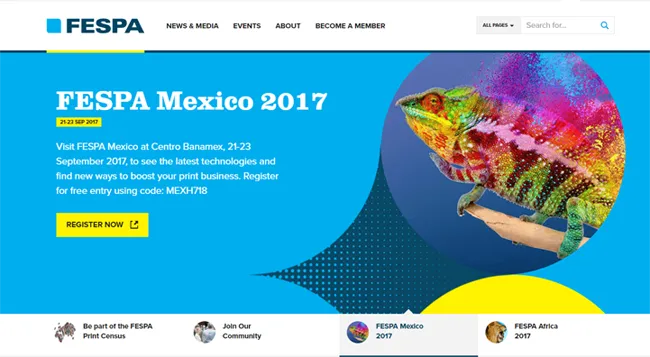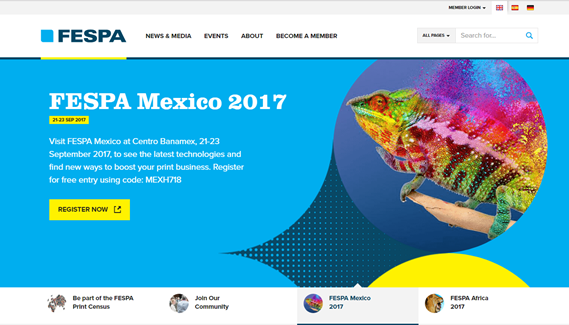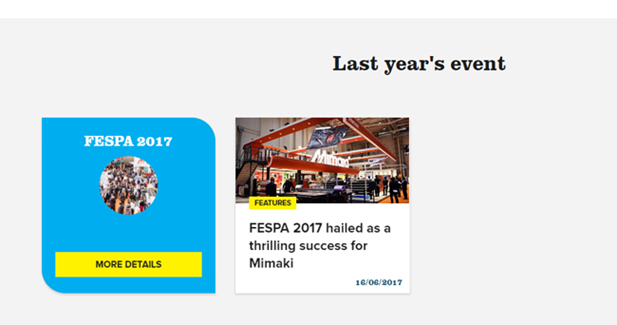


Building a kickass membership site with Kentico
We take a look at one of Pull's latest web builds - a complicated membership site - and how Kentico helped us overcome some of the challenges the project posed.

Our web development team are a hardworking bunch. In the last couple of weeks, they’ve completed work on not one, but two brand new websites.
Both sites, for Connexion World Cargo and FESPA, have one thing in common - they were both built using Kentico. We decided to catch up with one of our web-wizards, Developer Tom Wiles, to find out why they chose Kentico and hear about some of the neat stuff it allowed them to do when building the FESPA site.
Tell us a little bit about the FESPA site?
FESPA are the Federation of European Screen Printing Associations, so it’s a membership site, but there’s an ecommerce element to it as well. Member print associations from around the world can log onto the site where they’re then able to download a whole heap of resources, view galleries, read the latest news and view upcoming events. There’s even a forum if they want to join in the latest conversations.

You chose Kentico to build the site – can you explain what that is and what made it the right fit for this project?
Kentico is a CMS, or content management system. Essentially a set of programmes that are used to create and manage digital content and websites.
There are plenty of capable CMS, but for a site the size and scale of FESPA, Kentico was a good match. FESPA required a membership portal, an e-commerce component, geolocation and multilingual support. Kentico gives us all of these capabilities out of the box and for a price that doesn’t break the bank. For us it was a no-brainer to use Kentico.
Let’s cut to the chase then – what’s so great about the new FESPA site?
One thing we’re really pleased with are the geolocation functions in place. The way FESPA work, some countries have member associations, such as the UK, but other countries, America for example, don’t, meaning there is access to different bits of content depending on where you are. What we’ve done with the FESPA site is create a piece of geolocation wizardry that figures out exactly where people are located and makes sure they see the appropriate version of the site.
Sounds complicated. Can you give use a quick explanation of how you did that in Kentico?
One of the great things about Kentico is that it’s really easy for developers like myself to tap into some of the features that Kentico offers. If something doesn’t work exactly how you need it to, whether that be a payment process, how email notifications are sent, or in this case how geolocation works, then you as a developer have the power to change it and tweak it to suit your needs and requirements.
Specifically, in regard to geo-location, Kentico has a little-known feature that allows you to get rich location information based on the visitor’s IP address. We leverage this to detect which country they’re browsing the site from to present information that’s relevant for them.
What else is cool about the new site?
We have done a load of really interesting stuff with related pages. For example, if you’re reading a particular news article, some other suggested stories and content will appear below that. But it doesn’t just stop there. If you’re viewing an event, the site will also recommend news stories and articles from that event. Or, if you’re viewing an event in the future, the site will recommend content from the previous year’s event. Basically, we’ve tried to build the site in a way that gives users a reason to keep clicking.

FESPA produce a tonne of news articles and content. Was getting all that onto the new site a big ask?
That was one of the really big challenges on this project. Nobody wants to sit and manually duplicate hundreds or thousands of news articles to the new site, so we had to come up with a more automated solution.
Kentico offers a really simple way for developers to programmatically add content into their site, be it an article page, images, URL aliases, metadata etc. We leveraged this and wrote a bespoke migration tool that pulled all the pages we needed out of FESPA’s existing CMS, Joomla. This consisted of high traffic and recent news pages that would be of value in the new site.
You mentioned an ecommerce element. Tell us how that fits into a site like FESPA and what you’ve done with it?
Most e-commerce websites are visibly e-commerce websites. You land on them and you can tell immediately. You can see products and prices and you’ve got a little shopping cart icon, etc. FESPA isn’t one of those sites, it’s primary focus is something else entirely, and in fact you can only buy a single product, FESPA Direct.
It was because of this that we wanted to make the “checkout process” as simple as possible. In fact, most of the process is a ‘run of the mill’ registration process with the e-commerce component coming right at the end.
There’s no complex tables with your products listed, no multiple payment method options, no add to cart buttons. It’s a simple confirmation that you’re about to make a purchase with the option of inputting a voucher code. That’s it!

What has the reaction to the new site been like from FESPA themselves?
They love it! Seriously though, the client is very pleased with the new site and tell us they’ve been getting a lot of positive feedback. There also happy that, with the new checkout process, they now have the chance to develop the FESPA Direct product.
They’ve also been able to start adding content through Kentico and managing the website themselves from day one, with only a small amount of support from us, highlighting how easy and intuitive Kentico is as a CMS.
So there you have it, what was a complex membership site was made a lot easier by the ingenuity of our development team and Kentico. If you’ve got a web development project on the horizon, why not take a look at what else our development team do, or for more Kentico tips and tricks, head over to our Syntax blog.
Posted 25 June 2017 by Ben Waterhouse